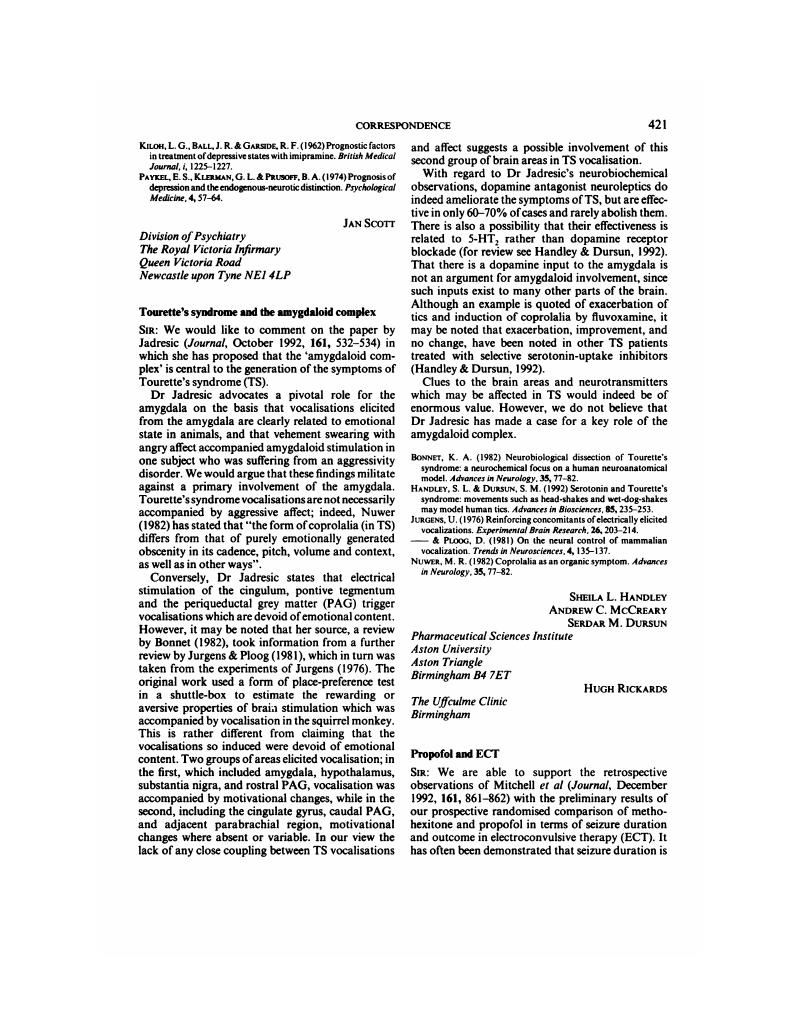No CrossRef data available.
Article contents
Tourette's syndrome and the amygdaloid complex
Published online by Cambridge University Press: 02 January 2018
Abstract
An abstract is not available for this content so a preview has been provided. As you have access to this content, a full PDF is available via the ‘Save PDF’ action button.

- Type
- Correspondence
- Information
- Copyright
- Copyright © The Royal College of Psychiatrists
References
Bonnet, K. A. (1982) Neurobiological dissection of Tourette's syndrome: a neurochemical focus on a human neuroanatomical model. Advances in Neurology, 35, 77—82.Google ScholarPubMed
Handley, S. L. & Dursun, S. M. (1992) Serotonin and Tourette's syndrome: movements such as head-shakes and wet-dog-shakes may model human tics. Advances in Biosciences, 85, 235—253.Google Scholar
Jurgens, U. (1976) Reinforcing concomitants of electrically elicited vocalizations. Experimental Brain Research, 26, 203—214.Google Scholar
Jurgens, U. & Ploog, D. (1981) On the neural control of mammalian vocalization. Trends in Neurosciences, 4, 135—137.Google Scholar
Nuwer, M. R. (1982) Coprolalia as an organic symptom. Advances in Neurology, 35, 77—82.Google Scholar



eLetters
No eLetters have been published for this article.